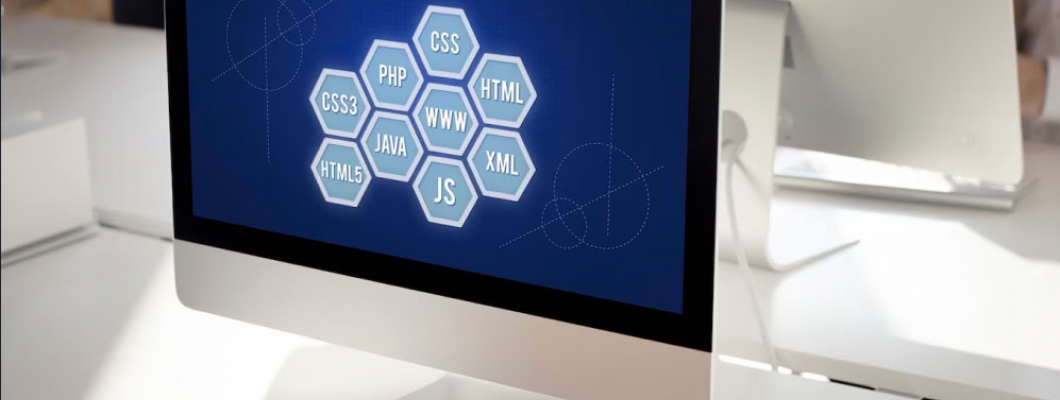
Introduction
Smart contracts are transforming industries by enabling trustless, automated agreements across decentralized applications (dApps). In 2025, as the blockchain ecosystem matures, the need for secure, efficient, and scalable smart contract programming languages is more critical than ever. Whether you're building on Ethereum, Solana, or a newer blockchain like Aptos or StarkNet, choosing the right language is key to success.
In this blog, we’ll explore the top programming languages for smart contract development in 2025, highlighting their features, strengths, and use cases.
1. Solidity – The Ethereum Powerhouse
Primary Use: Ethereum, BNB Chain, Polygon, Avalanche
Solidity remains the leading language for writing smart contracts on the Ethereum Virtual Machine (EVM). Created specifically for Ethereum, it is widely adopted due to its extensive documentation, active community, and robust tooling support.
Why Solidity in 2025?
A mature ecosystem with frameworks like Hardhat, Truffle, and Foundry
Compatible with most EVM-based chains
Constantly evolving with security and performance updates
Easy transition for JavaScript developers
Drawbacks:
The steep learning curve for beginners
Vulnerable to specific smart contract bugs if not audited properly
Use Case: Ideal for DeFi, NFTs, DAOs, and any dApps targeting Ethereum or EVM-compatible chains.
2. Rust – The Language of High-Performance Blockchains
Primary Use: Solana, Polkadot, Near Protocol, Cosmos
Rust is gaining rapid adoption in the blockchain space due to its focus on memory safety, zero-cost abstractions, and concurrency. It's the primary language for Solana smart contracts and is used across high-performance ecosystems.
Why Rust in 2025?
High speed and low memory footprint
Ensures safety without garbage collection
Suitable for low-latency, large-scale blockchain apps
Supports multithreading, perfect for complex dApps
Drawbacks:
Steep learning curve
Slower development due to strict compiler rules
Use Case: Best for DeFi protocols, games, and applications requiring high throughput and efficiency.
3. Move – The Rising Star of Asset-Centric Blockchains
Primary Use: Aptos, Sui
Developed originally by Facebook's Diem project, Move is a smart contract language now used in blockchains like Aptos and Sui. It introduces innovative features for asset safety, transaction parallelization, and developer flexibility.
Why Move in 2025?
Resource-oriented programming model ensures better asset safety
Built for parallel execution and performance
Type-safe and modular design
Gaining traction with new-gen Layer 1 chains
Drawbacks:
Still a growing ecosystem
Limited tooling compared to Solidity or Rust
Use Case: Suitable for next-gen DeFi platforms, games, and cross-chain applications where speed and safety are top priorities.
4. Vyper – A Secure Alternative to Solidity
Primary Use: Ethereum
Vyper is a Python-like programming language designed for creating more secure Ethereum smart contracts. It intentionally limits complexity to reduce the chance of vulnerabilities.
Why Vyper in 2025?
Emphasizes code simplicity and readability
Reduces attack surface with fewer features
Great for high-stakes contracts needing formal verification
Drawbacks:
Slower development pace
Lacks some of the advanced features found in Solidity
Use Case: Best for financial dApps, insurance platforms, and mission-critical smart contracts where code clarity is essential.
5. Cairo – The zk-Rollup Champion
Primary Use: StarkNet, zk-rollups
Cairo is the go-to language for zero-knowledge proof-based smart contracts. With Ethereum’s scalability efforts heavily relying on zk-rollups, Cairo is crucial for developers looking to build private, scalable dApps.
Why Cairo in 2025?
Native to StarkNet and zk-STARK ecosystems
Enables scalable and private transactions
Ideal for Layer 2 development and zk-based systems
Drawbacks:
Requires a new programming paradigm
Fewer developers and resources compared to other languages
Use Case: Best for private DeFi apps, large-scale decentralized games, and scalable dApps requiring privacy.
6. Go – The Infrastructure Language
Primary Use: Hyperledger Fabric, Cosmos SDK, Chainlink
Go (or Golang) isn’t typically used for writing on-chain contracts, but it’s essential for blockchain infrastructure and backend services. Projects like Cosmos and Chainlink rely heavily on Go for off-chain components and validators.
Why Go in 2025?
Lightweight and easy to learn
Excellent concurrency support
Well-suited for blockchain infrastructure
Drawbacks:
Not designed for smart contract logic directly
Lacks direct on-chain contract capabilities
Use Case: Best for oracle nodes, blockchain modules, validators, and enterprise blockchain solutions.
7. JavaScript & TypeScript – For Frontends and Smart Contract Interactions
Primary Use: Frontend + Web3 integration (not on-chain)
Though not used directly for writing smart contracts, JavaScript and TypeScript are vital for connecting dApps with smart contracts. Libraries like ethers.js, web3.js, and wagmi make JavaScript a necessity for blockchain frontends.
Why JavaScript/TypeScript in 2025?
Dominates the Web3 frontend ecosystem
Great for interacting with contracts and wallets
Seamlessly integrates with blockchain SDKs
Drawbacks:
Not a smart contract language itself
Use Case: Essential for building intuitive dApp UIs, managing wallet connections, and integrating smart contracts on the front end.
Choosing the Right Language: What to Consider
When selecting a programming language for smart contract development in 2025, consider the following:
Target Blockchain: Choose a language that’s native or best supported by your chosen chain.
Security: Languages like Vyper and Move offer enhanced safety features.
Performance Needs: Rust and Cairo are great for performance-intensive applications.
Tooling & Community: Solidity has the most mature ecosystem, while newer languages may have fewer resources.
Learning Curve: Developers with prior experience in JavaScript may prefer Solidity, while system programmers may lean toward Rust or Go.
Conclusion
Smart contract development is entering a new era in 2025, driven by innovation in blockchain platforms and developer tooling. Whether you're building scalable DeFi apps on Solana, secure governance contracts on Ethereum, or privacy-first dApps with zk-rollups, there's a programming language tailored to your needs.
The top contenders—Solidity, Rust, Move, Vyper, Cairo, Go, and JavaScript—each offer unique strengths. The best choice ultimately depends on your project’s goals, the blockchain you’re building on, and your team’s expertise.
Now is the time to explore these languages and get ready to build the next generation of decentralized applications.

Leave a Comment